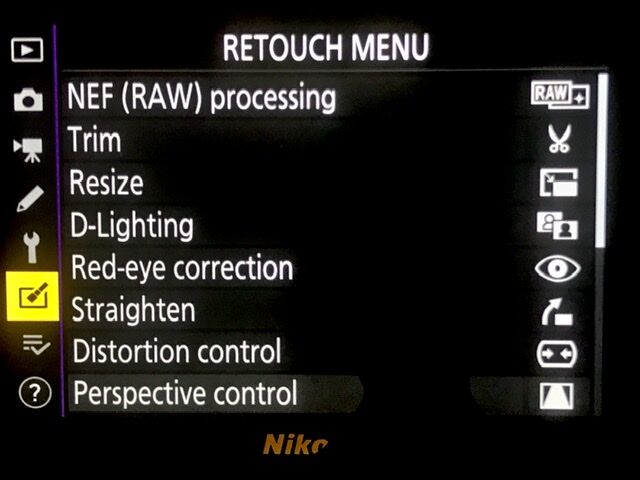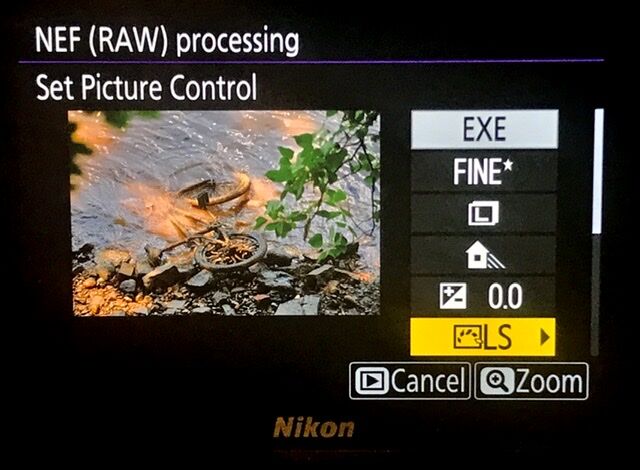POST PROCESSING VS. SOOC
Oct 29, 2022 12:14:41 #
imagemeister wrote:
I do not mind PP - but it must be SIMPLE and very in-expensive - and that leaves shooting raw OUT !
The RAW editor I use (DPP) came with the <Canon> camera, updates are also free.
With JPEG one can do X things, with RAW one can do X+Y things.
Not more difficult, simply more versatile.
Oct 29, 2022 12:16:04 #
Peteso
Loc: Blacks Hills
DirtFarmer, IMHO, I suppose you can make that interpretation, but I think what Einstein was trying to say is don't oversimplify (unless you are doing so mindfully). In the context of today's culture, the Einstein quote was a timely insight. Perhaps more than ever, there is a tendency to avoid complicated issues. "KISS" (i.e., keep it simple stupid) is glib and certainly more common than what Einstein said a long time ago. Keeping something simple (like SOOC v. PP) is fine if you're doing so with the awareness that there are adverse consequences to that choice. But acting like SOOC v. PP are equivalents is simple-minded and lazy. (To be clear, this is not directed at anyone subscribed on UHH; it's sole purpose is to be responsive and make a point hopefully worth thinking about.)
Oct 29, 2022 12:31:33 #
fredpnm wrote:
"Monkey Wrench" ?? Howzbout a Gorilla Wrench ??? Gorillas can now shoot, edit and process raw files completely SOOC. (See attached pix.)I don't mean to laugh, but you threw a monkey wrench into the whole SOOC argument for some folks who likely didn't know what the camera was doing...and of course you are correct.




Oct 29, 2022 12:37:58 #
Oct 29, 2022 12:55:03 #
kfoo wrote:
I am not trying to judge. I am just wondering what percentage of photographers use pp as opposed to SOOC. I just look at photos and I try to replicate the quality and I have difficulty getting that quality. Again, not trying to judge one way or the other.
If this is a serious question, I would answer it this way: First you have to decide if you are happy with your results, you have stated you are not. When you are not happy with results, generally you need to do something different.
While good results can be had weather shooting RAW, JPEG or Both, you should understand that shooting RAW gives you the most flexibility for extracting information from your file. RAW is 16 bit JPEG is only 8 bit. Jpeg is limited to the sRGB color space, RAW can use the wider gamut spaces like Adobe RGB or PRO Photo RGB. Not all pictures need that extra dynamic range, but some do. Everything you see one the internet is a JPEG in sRGB so excellent quality can be had with a JPEG workflow. But many of the best JPEGs you see on the internet started life as RAW files because all the editing done with 16 Bits of precision and wider color space, allows more control and quality in the process and are converted to JPEG as a final step. This is better for quality than trying to do extensive editing on a JPEG. It is also a bit more work and has a learning curve attached.
JPEG stands for Joint Photographic Experts Group. They were charged with finding a way to reduce the amount of data in photographic file so they could easily be displayed on the early internet. They did a fantastic job. JPEG files can look great, while having as much as 80% of the information in the RAW file thrown away. The changes are "Baked In". Now if you go to re- edit an in camera JPEG you are missing Lots of data.
Many modern camera manufacturers have done a wonderful job creating in camera algorithms that produce beautiful JPEGs in most situations. There is nothing at all wrong with using those. But if you intend to do extensive re editing (because the first edit was done inside the camera) then yo should try to keep those edits minimal. Every time you re edit and save a JPEG, The JPEG compression is applied again, and more data is lost.
So if you are getting great results SOOC, great, use them as they are. If you need to do extensive editing, you are better off with starting on RAW files.
You can shoot RAW + JPEG and use all the JPEGs that you are happy with, and for ones that need editing use the RAW files. It does not have to be PHOTOSHOP, there are Many good RAW converters/ editors available.
Give it a try.
Only you can decide how much effort you want to put into this, and the only goal should be to get results that make YOU happy and make the experience personally satisfying.
There is no ONE answer to any of this. What other people do is nothing more than data points.
Good Luck
Oct 29, 2022 13:12:25 #
Longshadow wrote:
When I used to write software I used to say "I can make something fool proof, goof proof, and idiot proof,
but I cannot make it blithering idiot proof."
but I cannot make it blithering idiot proof."

Back in '88 when I was first learning to skydive one of the first things I and every other student learned was how the equipment worked. At one point I mentioned to the instructor that "this stuff is idiot-proof". He replied: Yeah, but the problem is that as soon as you make something idiot-proof someone else invents a better idiot.
Oct 29, 2022 13:16:53 #
DirtFarmer wrote:
I have always wondered about that quote.
If you make something as simple as possible, then it is not possible to make it simpler.
If you make something as simple as possible, then it is not possible to make it simpler.
Einstein had a good sense of humor. That was just his slightly humorous way of saying "Don't try to oversimplify".
Oct 29, 2022 13:31:16 #
DirtFarmer wrote:
I think keeping more information is a Good Thing. ... (show quote)
Many years ago, I began the practice of taking notes as I photograph, so I always have known much more than when the slide was processed and what the slide number was - that typically was my link into my notes. The content of those notes depends on conditions - for example, at one time I questioned the accuracy of my camera’s light meter, and my notes included the metering ‘mode’ used. In a many case, my notes were more useful than EXIF could ever be.
Oct 29, 2022 13:40:43 #
LFingar wrote:
Back in '88 when I was first learning to skydive one of the first things I and every other student learned was how the equipment worked. At one point I mentioned to the instructor that "this stuff is idiot-proof". He replied: Yeah, but the problem is that as soon as you make something idiot-proof someone else invents a better idiot.


Always!
Oct 29, 2022 14:12:00 #
E.L.. Shapiro wrote:
I once took a workshop/seminar with a well know, i... (show quote)
“If you can pull off what you previsualize, you are on the right track.”
You know, I see you saying that, and over the years on this forum I’ve seen other photographers say “I PP my image to turn it into what I saw when I took it,” and I just don’t buy it. First if all, how can you remember exactly what you saw? Secondly, I believe many people PP an image to turn it into what they “wanted” to see, to what is visually pleasing to them.
Oct 29, 2022 14:42:22 #
davyboy
Loc: Anoka Mn.
tradio wrote:
I shoot in RAW 100% of the time so PP is a requirement.
I never shoot raw so PP is a requirement
Oct 29, 2022 14:42:46 #
I shoot raw plus jpeg. Most of the time I do some pp. The raw files have to be processed. I also process some jpeg images.
jack
jack
Oct 29, 2022 14:45:58 #
davyboy
Loc: Anoka Mn.
LFingar wrote:
If you consider pp to be any changes made to an im... (show quote)
If you shoot jpeg you too can improve your images
Oct 29, 2022 14:50:00 #
Oct 29, 2022 14:58:59 #
I realized early on that shooting JPEGs meant I could not change anything since every time I opened and saved a JPEG I was diminishing the quality. My answer was to save as a TIFF file. Then when I could shoot in RAW I realized I was now in control, analogous to the lab used by the corner drug store deciding what my photo should look like.
I was never a darkroom photographer, but now I am. ACR gives me so much control, along with PSCC, plus the ability to add keywords and descriptions to legacy photos. This has opened a new world to me! I'm getting old and I hope I will be passing on my collection of old family photos, dating to the early 1900s, to a new generation. Having the ability to imbed information is essential! I have no idea if they will have the ability to retrieve that information but down the line someone will and it will be there for them.
I was never a darkroom photographer, but now I am. ACR gives me so much control, along with PSCC, plus the ability to add keywords and descriptions to legacy photos. This has opened a new world to me! I'm getting old and I hope I will be passing on my collection of old family photos, dating to the early 1900s, to a new generation. Having the ability to imbed information is essential! I have no idea if they will have the ability to retrieve that information but down the line someone will and it will be there for them.
If you want to reply, then register here. Registration is free and your account is created instantly, so you can post right away.







